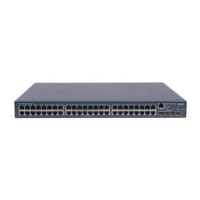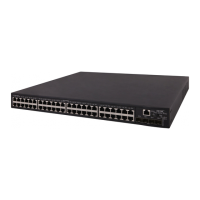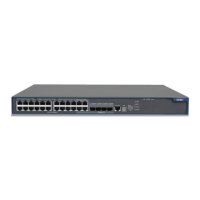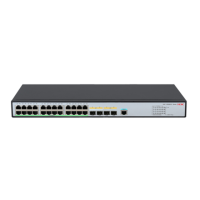1-29
z A self-service RADIUS server, for example, iMC, is required for the self-service server location
function. With the self-service function, a user can manage and control his or her accounting
information or card number. A server with self-service software is a self-service server.
z After you configure the self-service-url enable command, a user can locate the self-service server
by selecting [Service/Change Password] from the 802.1X client. The client software automatically
launches the default browser, IE or Netscape, and opens the URL page of the self-service server
for changing the user password. A user can change his or her password through the page.
z Only authenticated users can select [Service/Change Password] from the 802.1X client. The option
is gray and unavailable for unauthenticated users.
Examples
# Enable the self-service server location function and specify the URL of the self-service server for
changing user password to http://10.153.89.94/selfservice/modPasswd1x.jsp|userName for the default
ISP domain system.
<Sysname> system-view
[Sysname] domain system
[Sysname-isp-system] self-service-url enable
http://10.153.89.94/selfservice/modPasswd1x.jsp|userName
service-type
Syntax
service-type { ftp | lan-access | { ssh | telnet | terminal } * }
undo service-type { ftp | lan-access | { ssh | telnet | terminal } * }
View
Local user view
Default Level
3: Manage level
Parameters
ftp: Authorizes the user to use the FTP service. The user can use the root directory of the FTP server by
default.
lan-access: Authorizes the user to use the LAN access service. Such users are mainly Ethernet users,
for example, 802.1X users.
ssh: Authorizes the user to use the SSH service.
telnet: Authorizes the user to use the Telnet service.
terminal: Authorizes the user to use the terminal service, allowing the user to login from the console, or
AUX port.
Description
Use the service-type command to specify the service types that a user can use.
Use the undo service-type command to delete one or all service types configured for a user.
By default, a user is authorized with no service.

